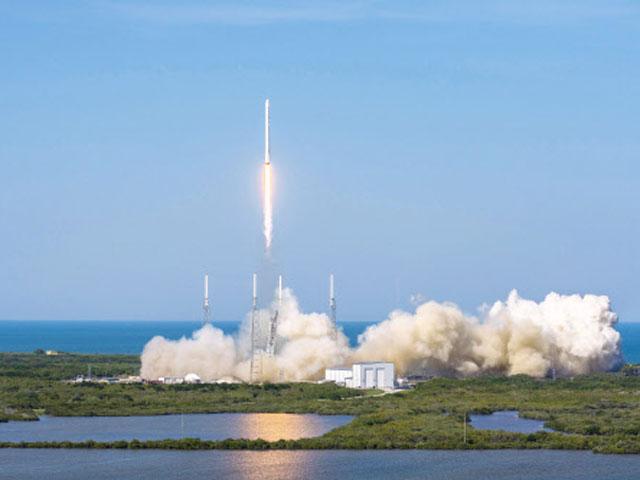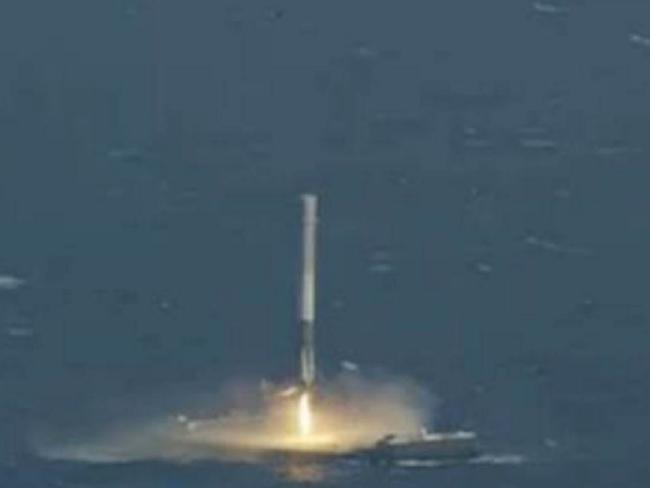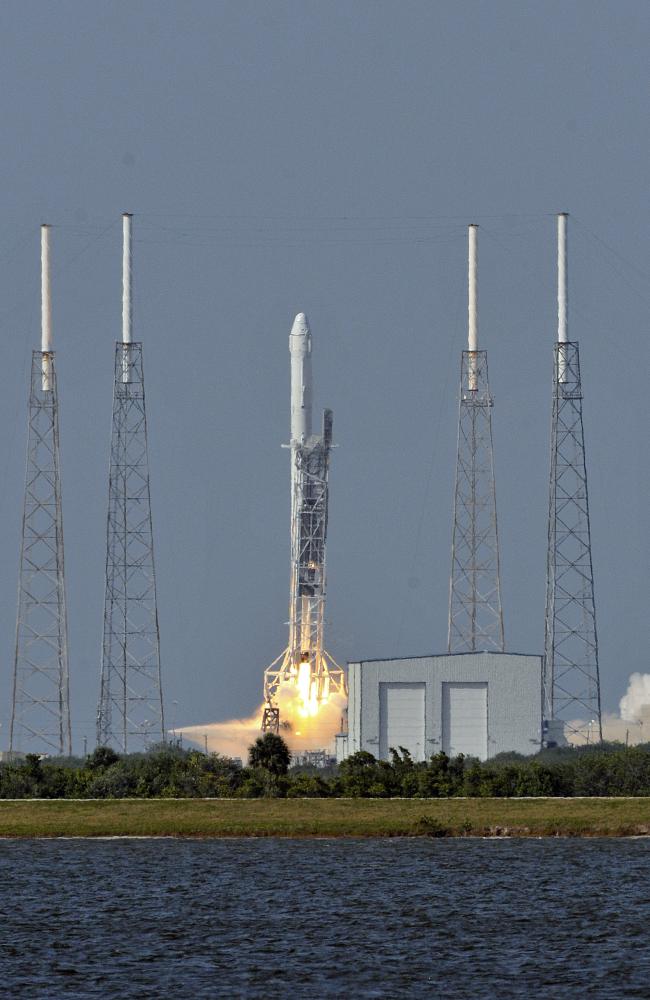SpaceX lands rocket on ocean platform for first time

AFTER four failed bids SpaceX finally stuck the landing on Friday, powering the first stage of its Falcon 9 rocket onto an ocean platform where it touched down upright after launching cargo to space.
Images of the tall, narrow rocket gliding down serenely onto a platform that SpaceX calls a droneship sparked applause and screams of joy at SpaceX mission control in Hawthorne, California.
“The first stage of the Falcon 9 just landed on our Of Course I Still Love You droneship,” SpaceX wrote on Twitter, after launch from Cape Canaveral, Florida at 4.43pm (2043 GMT).
NASA spokesman George Diller confirmed that the rocket had successfully landed, just minutes after the Falcon 9 propelled the unmanned Dragon cargo craft to orbit, carrying supplies for astronauts at the International Space Station.
SpaceX has once before managed to set the rocket down on land, but ocean attempts had failed, with the rocket coming close each time but either crashing or tipping over.
Speaking to reporters afterwards, SpaceX CEO Elon Musk said that being able to return costly rocket parts for repeated use, instead of jettisoning them into the ocean after each launch, will make spaceflight less expensive and less harmful to the environment.
“It is just as fundamental in rocketry as it is in other forms of transport such as cars or planes or bicycles or anything,” said Musk, who also runs Tesla Motors.
Musk said it costs around $300,000 to fuel a rocket, but $60 million to build one.
“If you have got a rocket that can be fully and rapidly reused, it is somewhere on the order of a 100-fold cost reduction, in marginal costs,” he said, adding that he hoped his competitors would follow suit.
“Landed! That is amazing! World-leading ability, proven,” wrote Canadian astronaut Chris Hadfield on Twitter.
“Opens the imagination to what is possible.”

Next, the booster will undergo a series of tests, including 10-static fires on the launch pad, before engineers decide if it is in good enough shape to fly again.
If so, the next launch of the same booster could be in the next two to three months, Musk said.
“In the future, hopefully we will be able to relaunch them in a few weeks.”
In the meantime, SpaceX will keep working on perfecting its landing techniques, whether on ocean or solid ground, since both options need to be available to suit different types of missions.
Musk said about half of SpaceX’s rockets will need to land at sea, and it might take a few years to work out all the kinks.
“But I think it is proven that it can work,” he said.
“We will get it to a point where it is routine to bring it back and the only changes to the rocket are to hose it down, give it a wash, add the propellant and fly it again.”
Политика конфиденциальности | Правила пользования сайтом








